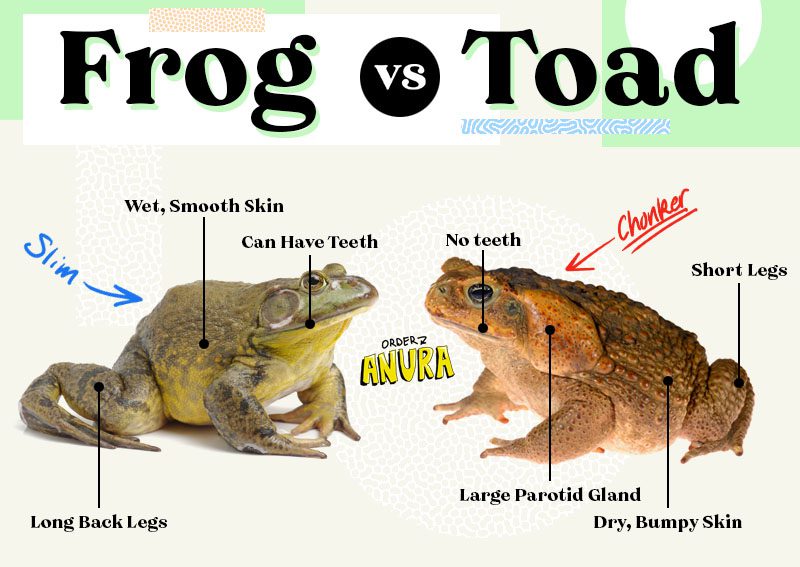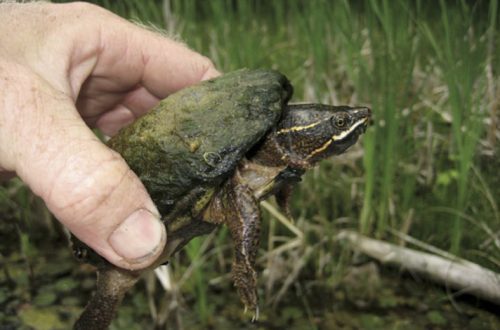
Features of representatives of the amphibian class and how a frog differs from a toad
According to the generally accepted theory of evolution, life on Earth originated in the depths of the oceans. For many millions of years, in the continuous struggle for existence, species appeared and disappeared, giving way to new, more perfect ones, possessing the best means for survival. And for a long time, for a great variety of animal species, the only abode on the planet was the water element. But the time has come and the development of land has begun. Desperate pioneers gradually, from generation to generation, changed, getting rid of the unnecessary and acquiring the necessary for a comfortable life out of the water: the fins turned into paws, a new respiratory organ appeared to replace the gills – the lungs.
Today, nature strikes the imagination with enchanting abundance and diversity of species both in the aquatic environment and on the earth’s surface, and the past has gone into such an inaccessible depth that it is difficult to believe in the plausibility of the theory if there is no conclusive evidence. But there is evidence, and these are not archaeological artifacts at all, but living beings with which everyone is familiar.
It’s about class amphibians or amphibians. Science claims that representatives of this class are an intermediate link between fish and reptiles. Who makes up this class? Yes, the most common amphibian species are frogs and toads. Indeed, in the life of individuals of each of these species, an amazing metamorphosis occurs: the transformation from a tadpole living in water with fins and gills into a land animal, breathing with lungs and equipped with four developed paws. And is this not a clear demonstration of the exit of fish to land?
Interesting characteristic features that distinguish representatives of the class of amphibians from other animals. Among them highlight the main features:
- reproduction by eggs laid in water,
- breathing with gills – in the stage of tadpoles,
- transition to breathing with the lungs at the stage of exit from the water,
- the ability to breathe through the skin surface,
- lack of hair, feathers or scales on the skin.
After getting acquainted with the class of amphibians, the question inevitably arises, which difference between toads and frogs. And, it turns out, it’s not difficult to discern the differences, just look closely.
Main Differences Between Frogs and Toads
Appearance
Exist several expressive external signs, making it easy to distinguish frogs from toads:
- The first thing that attracts attention is the skin. In frogs, it is smooth, slippery, wet. Constant hydration maintains the exceptional ability of frogs to breathe through their skin. In toads, the skin is dry, keratinized, covered with tubercles, which, when irritated, secrete caustic poisonous mucus. Toads do not have the ability to breathe through their skin. The breathing process of an adult is provided by the lungs.
- The skin color of frogs is green, which is determined by their habitat, because they spend most of their time in the water, among the greenery of swamp plants. Land toads are brown in color, which allows them to be invisible, merge with the ground, sitting in a damp hole during the day. For toads, camouflage is especially important, since it does not live near water, where it could dive in case of danger, and it is unable to jump like a frog.
- There is a noticeable difference in the structure of the body. The proportions of the frog are more elongated, with the head raised upward and stretched forward. Thanks to its long and strong hind legs, it looks resilient, springy, and is really capable of moving quickly with large jumps. The toad, on the other hand, appears loose, squat, and clumsy. Her overweight body is pressed to the ground, her head is flat, her legs are short and weak. That is why the toad moves almost crawling, only occasionally making heavy jumps.
- If you carefully examine the eyes of a toad, you can see that her pupil, unlike a frog, is elongated, which is associated with a nocturnal lifestyle.
- One of the surest signs that distinguishes a frog from a toad is the teeth. Almost all varieties of frogs have small teeth, while toads never have them.
Life
Frogs spend most of their lives in the water, hunting during the daytime, preferring to catch flying insects or small waterfowl. After the evening musical roll call, they fall asleep until morning. Toads, on the contrary, hide in the ground during the day, and go hunting at night, with great pleasure eating slugs, beetles, larvae and caterpillars, which, by the way, provide significant assistance to people in the fight against pests of gardens and orchards.
Reproduction
Both frogs and toads breed by laying eggs. If slimy lumps float on the surface of the reservoir, then most likely this is caviar laid by a frog. Toads lay eggs in the form of long threads that wrap around algae stalks. Some species are known for showing special care for offspring.
For example, a male toad, common in Europe, winds threads with eggs on the foot and sits in an earthen hole, waiting for the start of hatching, after which it carries the offspring into a reservoir. And the representative of toads from Latin America is distinguished by the fact that it carries offspring in a special depression on its back. This gives much more chances for the survival of young animals, because there are so many lovers of fresh caviar living in the water.
It is important to remember that all toads and frogs living in middle latitudes are not only harmless to humans, but also very useful, besides, if you take a closer look at them, you can see that they are very cute.





